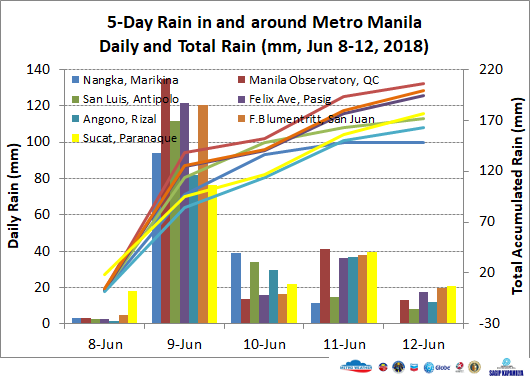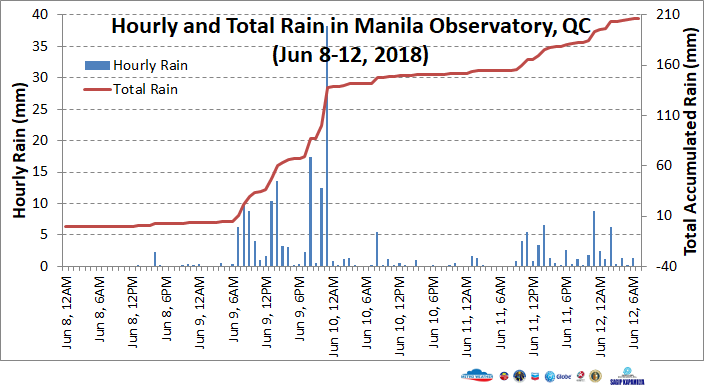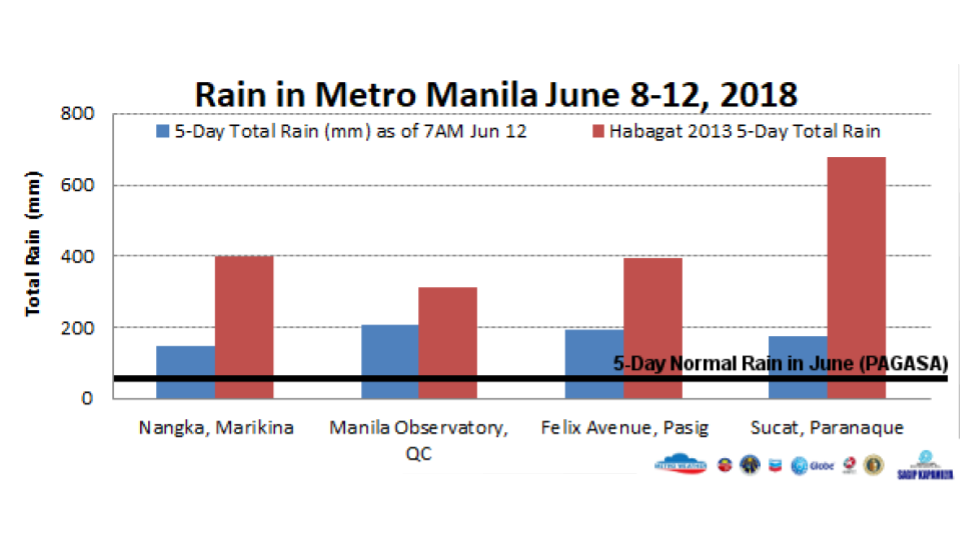by Genie Lorenzo
Rain due to the enhanced habagat totaled ~150-200 mm the past 5 days in weather stations in and around Metro Manila. The greatest observed total rainfall (206.4 mm as of 7 am, June 12, 2018) was observed in Manila Observatory, Quezon City. More than 50% of the total 5-day rain fell on June 9 (Saturday). In Manila Observatory, hourly rain was maximum (38.2 mm) around 11 PM on June 9. And from June 10, though rain was continuous, hourly rain did not exceed 10 mm per hour. The rainfall totals the past 5 days are still lower than the Habagat 2013 totals, which caused widespread flooding in Metro Manila. The 5-day rainfall in Metro Manila is more than twice higher than the 5-day normal rainfall in June (Science Garden, PAGASA).
The greatest observed total rainfall (206.4 mm as of 7 am, June 12, 2018) was observed in Manila Observatory, Quezon City. More than 50% of the total 5 day rain fell on June 9 (Saturday). In Manila Observatory, hourly rain was maximum (38.2 mm) around 11 PM on June 9. And from June 10, though rain was continuous, hourly rain did not exceed 10 mm per hour.
Rain due to the enhanced habagat totaled ~150-200 mm the past 5 days from weather stations in and around Metro Manila. The greatest observed total rainfall (206.4 mm as of 7 am, June 12, 2018) was observed in Manila Observatory, Quezon City. The rainfall totals the past 5 days are still lower than the Habagat 2013 totals, which caused widespread flooding in Metro Manila. The 5-day rainfall in Metro Manila is more than twice higher than the 5-day normal rainfall in June (Science Garden, PAGASA).



